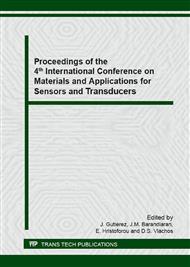p.70
p.74
p.78
p.83
p.87
p.92
p.96
p.101
p.106
Mathematical Model Switched Reluctance Motor
Abstract:
This paper describes a mathematical model of switched reluctance motor (SRM). The mathematical model of the SR motor is nonparametric and can only be established with experimental data, instead of an analytical representation. Because the reluctance varies with rotor position and magnetic saturation is part of the normal operation of SR motors, there is no simple analytical expression for the magnetic field produced by the phase windings. The shape of phase current before commutation is of interest because it varies widely depending on when the phase winding is excited and what the rotor speed is. To illustrate this effect, two step response simulations were done here in Matlab/Simulink. The SR motor model used in these two simulations is a 6/4 linear magnetics model, the same structure as the experimental SR motor. For the first simulation, a step voltage is fed into phase A and the initial rotor position is set to be 1o instead of 0o so that the rotor will move in the positive direction. The results show that the rotor stops at 45o after some oscillation which is the aligned position of this phase A. For the second simulation, a step voltage is fed into phase C. The initial position is 0o. According to this, the rotor will move towards the aligned position of phase C, i.e. 15o.
Info:
Periodical:
Pages:
87-91
Citation:
Online since:
May 2015
Authors:
Keywords:
Price:
Сopyright:
© 2015 Trans Tech Publications Ltd. All Rights Reserved
Share:
Citation:


